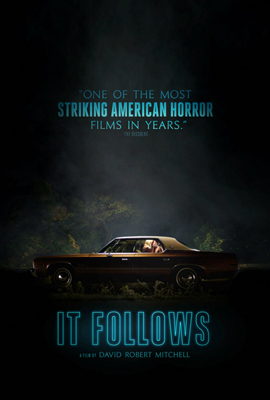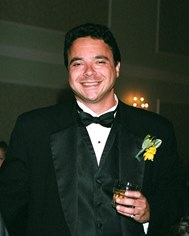 If you’re a college basketball fan, you’re in the midst of March Madness; if you’re a ‘70s and ‘80s horror movie lover, the real March Madness ‘shots’ and ‘scores’ come in the form of David Robert Mitchell’s horror film “It Follows-” a movie that incorporates the tracking ‘shots’ and musical ‘scores’ you’ve come to love from the early horror films of directors such as John Carpenter and David Cronenberg and uses their cinematic techniques and styles to create a film worthy of these directors’ earlier works.
If you’re a college basketball fan, you’re in the midst of March Madness; if you’re a ‘70s and ‘80s horror movie lover, the real March Madness ‘shots’ and ‘scores’ come in the form of David Robert Mitchell’s horror film “It Follows-” a movie that incorporates the tracking ‘shots’ and musical ‘scores’ you’ve come to love from the early horror films of directors such as John Carpenter and David Cronenberg and uses their cinematic techniques and styles to create a film worthy of these directors’ earlier works.
Usually, if you see a director copying the film techniques of another director in a genre, it can more often than not feel like a cheat or dull your senses because you’ve already seen it done- and done better. However, there’s such a love and care in Mitchell’s crafting of “It Follows” that it blows right past the homage moniker one could easily dangle on this film. Just as you’ve experienced watching Quentin Tarantino bring back the style of ‘60s martial arts films with “Kill Bill” or Brian DePalma turning Hitchcock movies like “Psycho” into his own “Dressed to Kill” or using “Vertigo” and “Rear Window” as templates for his “Body Double,” Mitchell takes and uses past directing styles to create a film for horror fans that only a horror movie fan himself could accomplish.
Mitchell’s love of ‘70s and ‘80s horror is apparent in the basic storyline for “It Follows;” it gives us the steadfast horror movie staple of promiscuous teens as prey. The film centers on Jay (Maika Monroe), an average teenage girl in suburban Detroit who decides to take her relationship with Jeff (Jake Weary) to the next level one night while parked in the backseat of Jeff’s car. After coitus, Jeff brings the ‘interruptus’ by chloroforming Jay, tying her to a wheelchair and, upon her waking, shows Jay the real horror of casual sex. In sleeping with Jeff, he has passed onto her a curse- Jay will now be followed by a malevolent force that will follow her until ‘it’ kills her. ‘It’ can take any form, Jeff explains: tied to the wheelchair, Jay sees ‘it’ in the form of a naked woman slowly lurching toward her. Jeff unties Jay and takes her away from ‘it,’ explaining that he just wanted her to see ‘it’ to believe it. Now with Jay as its target, only she can see ‘it’ and the only way to be rid of the curse is for Jay to sleep with someone else and pass the curse onto them, which Jeff urges her to do as soon as possible to at least wash his hands clean of ‘it’- should Jay die, Jeff inherits the curse again. With the shapeshifting ability of “The Thing” coupled with the relentless pursuit of “The Terminator,” “it” can be outrun, but ‘it’ can never be stopped.
While other directors may have had Jay constantly running into ‘it’ to quicken the scares, Mitchell plays it smart and paces his audience for a slow burn. This is a horror movie where people confront demons with wits and don’t destroy curses with hokey amulets. Though the tracking shots, suburban setting and musical score of “It Follows” can most easily be compared to Carpenter’s “Halloween,” my real love of “It Follows” was that it reminded me of other horror movies and directors I’ve admired- from the sexual promiscuity that fed the creature in Cronenberg’s “Rabid” to the slow tracking shots and dissolves that Stanley Kubrick used to great effect in “The Shining” to the dark undercurrent running through suburbia that David Lynch depicted in “Blue Velvet.” The cinematography and production design even make the film look like it was made in the ‘70’s, which just added to my enjoyment and fueled those nostalgic memories.
Evoking fond memories of those great ‘70s and ‘80s horror movies by recreating their style is what really impressed me most with “It Follows.” In keeping with the tradition of the best horror movies being those that show evil invading our everyday lives, Mitchell does just that. To borrow a phrase from that bygone era, “It Follows” keeps it real.
